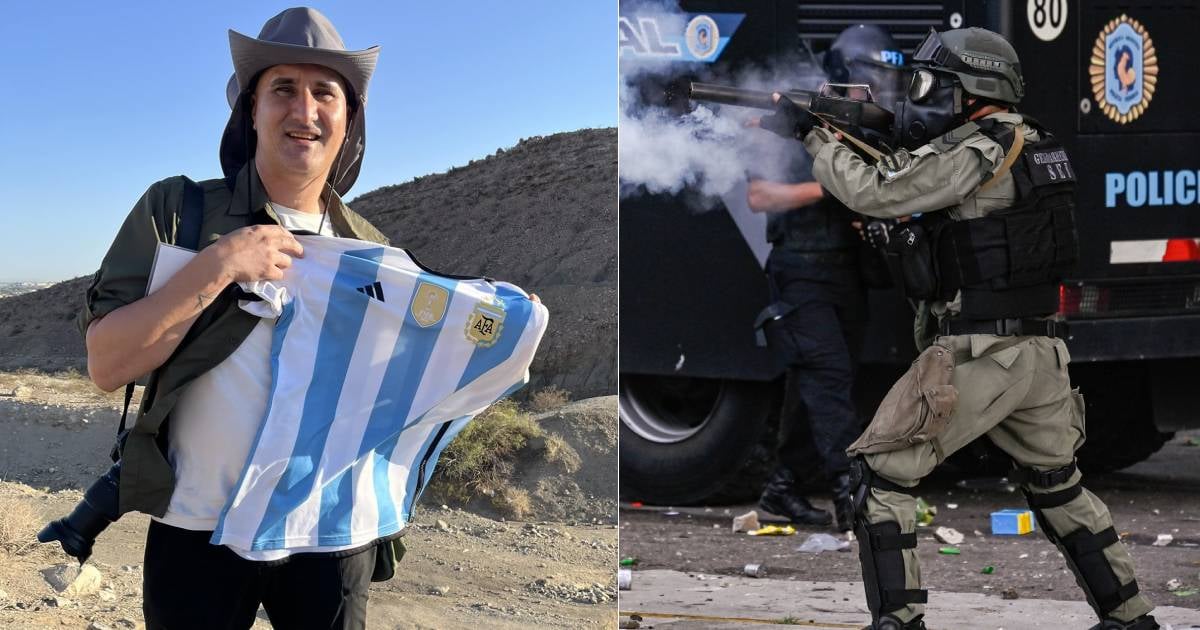The Argentine government has terminated the services of Cuban photographer Kaloian Santos Cabrera, who captured a crucial image that identified a police officer responsible for severely injuring a reporter during the pensioners' protest on March 12 in Buenos Aires. The photos, taken in front of the Argentine Congress, not only documented the exact moment of the shot but also revealed the officer's name on his uniform. This evidence allowed the independent platform Mapa de la Policía to piece together the events that led to photographer Pablo Grillo being hospitalized with a head injury. Kaloian's visual work was instrumental in publicly exposing state violence.
The dismissal of Kaloian occurred on March 31, shortly after the widespread dissemination of these images. The public accusation was made by Cora Gamarnik, a researcher at the University of Buenos Aires, who directly accused the government of "shooting the messenger" as retribution for documenting an act of abuse. According to the State Workers' Association (ATE), Kaloian was the only employee dismissed from the Ministry of Culture on that date. When appealing for his reinstatement, authorities allegedly stated that the order came "from above" and was "irrevocable." Kaloian had been employed there for 13 years.
"Thank you for your photos, Kaloian. This dismissal will be a badge of honor in your career," wrote Gamarnik on social media, a statement echoed by hundreds of journalists, photojournalists, and human rights organizations. Kaloian himself has yet to comment on the matter.
Born in Holguín, Santos Cabrera worked as a photographer and journalist for the Cuban official newspaper Juventud Rebelde and the digital magazine La Jiribilla. His early aesthetic and narrative perspective was aligned with the narrative of the Cuban Revolution, often portraying a romantic or legitimizing view of Cuban socialism, emphasizing sacrifice, national identity, and resistance to "imperialist aggression."
Over the past 13 years, he was employed by Argentina's Ministry of Culture, where he consistently covered institutional, cultural, and street events. Additionally, he has contributed to various print and digital media outlets, including Página/12, where his photographs have illustrated impactful reports on social and political issues.
His work has been exhibited in galleries and cultural spaces in both Buenos Aires and Havana, and he is part of regional photography collectives. In recent years, his work in Argentina has leaned more towards critical photojournalism within democratic contexts, documenting social movements, police misconduct, and inequality.
It remains uncertain if this shift represents a break with the Cuban regime or an ideological change, but his dismissal in Argentina for capturing an act of state repression places him, paradoxically, in a situation akin to many reporters in Cuba who have been silenced for revealing what those in power wish to remain hidden.
Key Questions on Kaloian Santos Cabrera's Dismissal
Why was Kaloian Santos Cabrera fired by the Argentine government?
Kaloian Santos Cabrera was fired for capturing a photograph that identified a police officer who injured a reporter during a protest, which led to public exposure of state violence.
What impact did Kaloian's photos have on the investigation?
His photos were crucial in identifying the police officer involved in the incident and allowed the independent platform Mapa de la Policía to reconstruct the events.
How has the public reacted to Kaloian's dismissal?
The dismissal has sparked widespread support from journalists, photojournalists, and human rights organizations, who view it as an act of censorship against documenting state abuses.
